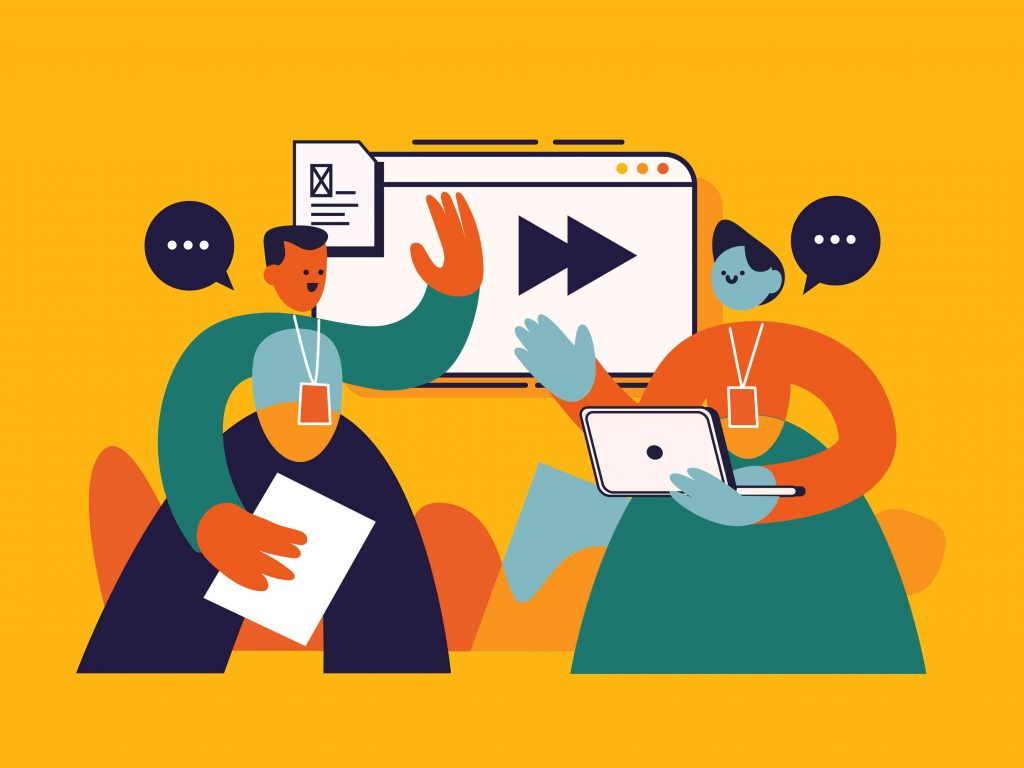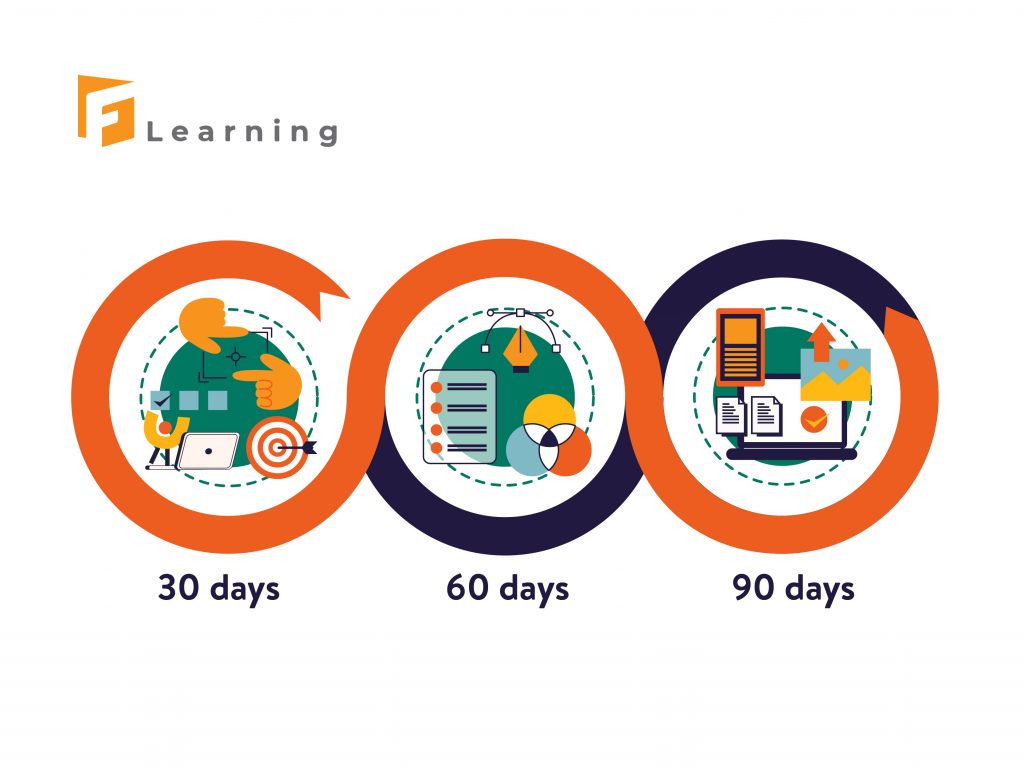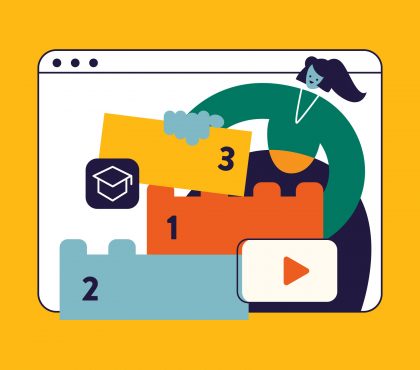The employee onboarding process at your corporation is your opportunity to make a good first impression on new staff. This process should aim to make the new employee feel welcomed, appreciated, and ready to do well in their new position. In this blog, let’s find out more details about a successful employee onboarding process.
What is a New Employee Onboarding Process?
A new employee onboarding process is the systematic conversion of suitable candidates into high-performing employees.
Companies give new employees the knowledge, connections, and equipment they need to feel confident enough to do excellent performance by carefully designing training steps. A bad employee onboarding process can result in early departures and high staff turnover. On the other hand, a positive one can set the stage for long-term happiness.
Recommend reading:
Preparation Checklist to Power your Digital Transformation
Wondering if you miss anything in your preparation to digitize your training? This is just what you need.
New Employee Onboarding Process Flow
#1: Offer Release
This is the 1st stage of the new employee onboarding process flow. New employee onboarding begins as soon as your employees are hired. When an employee is chosen through interviews, your company sends them an offer letter, policy papers, onboarding forms, and any other documentation that needs to be completed right away.
Maintaining a clear and transparent approach will assist your staff members in gaining trust and becoming acquainted with their new workplace.
Below is the checklist for offer release:
- Create a detailed job description.
- Phone calls: It facilitates communication with the applicant more effectively.
- Provide detailed information about the job profile.
- Salary negotiations/proposals
- Check-ins
#2: Offer Acceptance
This is the 2nd stage of the new employee onboarding process flow. After receiving the offer letters, the very next step is waiting for your employees to accept the offers. At this point, your company may plan a phone call or a meeting to go over the previously agreed-upon policies, processes, benefits, and so on.
The active response and engagement of your company will improve employee retention and create strong relationships with them. This is a crucial stage in the employee onboarding procedure.
Below is the checklist for one week before hiring a new employee:
- Gather paperwork.
- Employee Contract/Agreement
- Employee manual (For example a confidentiality policy, a health and safety policy, and so on.)
- Non-Disclosure Agreement
#3: Waiting Period
This is the 3rd stage of the new employee onboarding process flow. There is frequently a waiting time between when a staff accepts an offer and when he starts. Even if an employee accepts an offer, it does not guarantee that he will show up on the agreed-upon date. During the waiting period, it is critical to establish a connection with the employee.
The employee should be enthusiastic about joining the organization. As a result, when designing the onboarding process, you should account for the waiting period.
#4: The Joining Day
This is the 4th stage of the new employee onboarding process flow. The first day of work for any employee is critical. People are usually excited, happy, and nervous. As an L&D manager, it is your responsibility to make them feel at ease and welcome in the new office. This will give the new employees a sense of belonging.
After Joined Checklist:
- New staff welcome email
- Meet the team
- Schedule time for hiring paperwork
- Formal onboarding meeting with the HR department
- Plan the lunch
Employee Checklist for New Hires:
- Create Accounts
- Business Email
- Company Business Card
- Human Resource Management Software
- Parking Space
- Laptop or desktop computer
- Business Phone (if necessary)
#5: Collaboration with Other Departments
This is the 5th stage of the new employee onboarding process flow. When a new hire starts a new job at the company, it is critical to notify the department in which the person will be working as well as the departments with which they will be coordinating.
The list could include the IT team, HR, subordinates, and managers. They can even assist in the decoration of the employee’s cubicle and the scheduling of orientation meetings for the new members of their team.
#6: Training & Orientation
This is the final stage of the new employee onboarding process flow.
When a new employee is onboarded, it is critical to provide them with information about the corporate culture and their contribution as a staff. This is the appropriate time to introduce them to the company’s goals and provide them with pertinent information about the company’s teams. You can even set goals for the next 30, 60, or 90 days for your employees.
Orientation or training can help employees get up to full speed and get started quickly. It also provides them with access to and knowledge of the company’s operations.
Onboarding Process Steps for Your Corporate
#1: Sending an Offer Letter
Critical goal:
Express your sincere thanks and delight that your candidate chose you—likely from a huge list of other employers.
While extending a job offer implies that you value your new hire and their abilities, you shouldn’t rely solely on the offer to generate warmth and excitement. Nothing conveys the feeling that you can’t wait to work with someone more than a meaningful message.
Best practices include:
- Send a message to your new staff to express your delight that he approved your offer.
- Outline top-level job duties, demands, and expectations in detail. (The offer letter may be your last chance to avoid surprises before candidates join the team officially.)
#2: Early Onboarding for the New Employee
Critical goal:
Get the candidate excited while also reassuring them that they made the right decision to take chances in a new position.
When your applicant signs the offer letter, the employee onboarding process officially begins. The 2-3 week period between offer acceptance and start date marks an important opportunity for engagement. Take advantage of it.
Best practices include:
- Motivate hiring managers to take responsibility for the candidate’s expertise and to concentrate on getting their new hire excited.
- Share role-relevant documentation, including background information on specific tasks the candidate may take on when they start. You might consider sharing the following information:
- A schedule for the first week (at least)
- Their work email address and phone number, as well as login information for your company’s communication tools.
- A list of tasks and objectives for the first week (at least).
- Access credentials for communication tools or work management hubs

#3: Welcoming New Hires on the First Day
Critical goal:
Deliver a personalized experience that makes the new hire feel welcomed and appreciated. Planning plenty of one-on-one meetings with new colleagues makes the first day feel more meaningful rather than over-planned.
Best practices include:
- Schedule meetings with the new employee to check-in.
- 30 minutes in the morning for a greeting
- 30 minutes at the end of the day for a debrief
- Plan a team lunch with the new employee’s team.
- Provide new employees with a welcome kit containing apparel and office supplies that have been customized with your company’s brand, colors, and logos.
- Provide videos, web pages, or other documentation with leadership presentations, your company’s mission, and history that help to bring your organization to life.
#4: Orienting and Onboarding New Staff in the First Week
Critical goal :
Help new employees understand what is expected of them in their new role while also imagining future possibilities.
Best practices include:
- Send out a spectacular new hire official statement.
- Plan meetings with collaborators and teams from across the organization.
- Plan meetings with company leaders or top performers so that new hires can hear their stories and learn from their experiences.
- Make a list of regular tasks, first-year goals, stretch goals, and key performance indicators.
- Provide information about the potential for advancement in their specific position or in the company as a whole.

Recommend reading:
#5: Employee Engagement and Team Building
Critical goals:
Provide opportunities for new staff to form important relationships. While you cannot participate in networking for your new employee, you can certainly spice up your onboarding experience by providing opportunities for new employees to make connections throughout the office.
Best practices include:
- Plan team-building activities.
- Complete 1-week, 30-day, and 60-day pulse checks to determine how staff feel overall and whether they have the direct help, resources, and tools they require to work efficiently and effectively.
- Create and distribute a candidate experience survey to learn how your program is progressing.
If you are looking for a new employee onboarding app, just check this video out for a solution from the Microsoft teams.
Final words
Successful employee onboarding processes are a reflection of the time and effort invested in them. Take the time to think about it and do your homework. The first few weeks have the most influence on a new hire’s outlook on your company, whether positive or negative, and set the standard for their long-term relationship with your company.
If you want to simplify the onboarding process, check out our onboarding video solution for more information. It offers an engaging way to get your new hires to quickly be a part of your team. With attractive visuals and condensed information, animated videos are more fun to watch than heavy-text documents or boring training sessions.
Are you interested in our solution? Contact us now for a FREE consultation.
- WhatsApp: (+84) 378 713 132
- Email: [email protected]
- Fanpage: https://www.facebook.com/f.learningstudio
- LinkedIn: https://www.linkedin.com/company/f-learning-studio/
Read more:
- Microlearning For Employee 101: All You Need to Know
- Compliance Training 101: How to Engage your Employees?
- 11 Learning and Development Metrics You Should Track

Sean Bui, the founder and creative director of F.Learning Studio, is a respected leader in the e-learning and multimedia production industry. With over 10 years of experience, he has dedicated his career to helping organizations create engaging and impactful learning experiences.
Under his leadership, F.Learning Studio has grown into a trusted partner for organizations in the education, healthcare, and corporate training sectors, producing over 2,000 minutes of educational animation.







